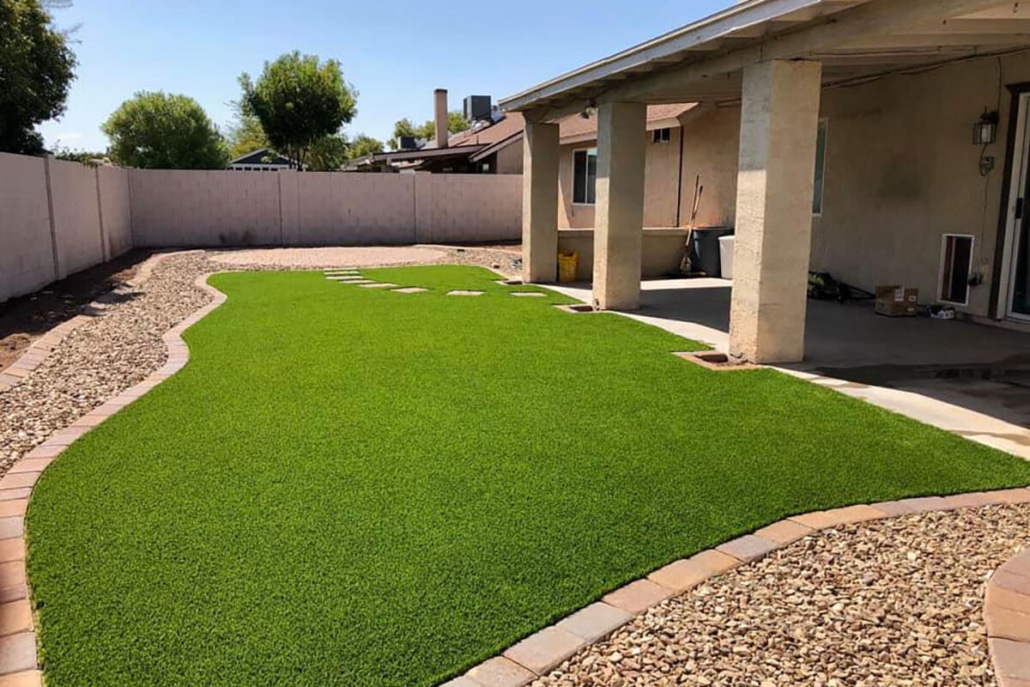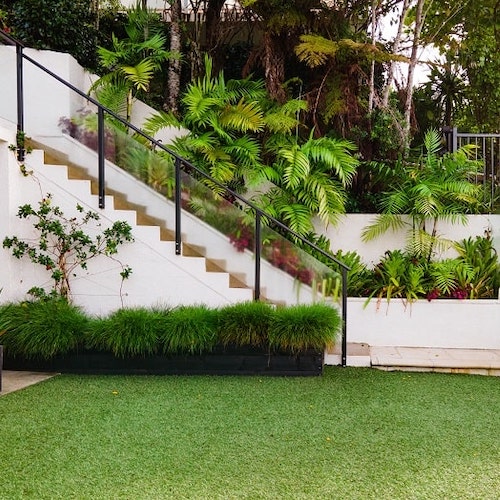What is Artificial Grass Infill and What are the Types?


When deciding on a Las Vegas artificial turf installation, there are a few decisions to make in terms of building materials. Besides the synthetic turf itself, one of the most important considerations in the material that will be used as the artificial grass infill.
This can have a huge impact on how durable and fit for purpose your synthetic lawn is, and the right answer will be different depending on how you intend to use your artificial turf once it has been installed.
As the name implies, artificial grass infill is the material that is used to fill in the base layer of your synthetic turf and can affect the properties of your artificial grass quite a lot, as well as impacting the ease of maintaining your fake grass.
Living grass naturally grows upright to reach the sun and will return to an upright position after being flattened. Artificial grass infill helps the synthetic grass blade to stay upright and stand back up after being flattened, among several other important functions. Infill is usually made of fine materials such as sand or rubber crumbs.
Unless you are on a very tight budget, it is almost always better to use the recommended amount of infill for the artificial grass product you are installing. Besides keeping the artificial grass blades upright, infill acts as ballast to prevent high winds lifting your synthetic grass, makes your artificial turf more impact-dampening like real grass, and helps prevent rolls and wrinkles forming in the synthetic grass.

There can be advantages to both options, however:
Advantages of Artificial Grass with Infill
Advantages of Artificial Grass without Infill
Most of the potential disadvantages of using infill are really just the consequences of using the wrong type of infill for your situation, or a result of poor maintenance leading to damage, dirt build-up, or weed growth. This is one of the reasons it is turf infill that you use.
There are a few different types of material that can be used as infill for artificial grass, depending on how your synthetic turf will be used and the kind of wear it needs to withstand. These are three of the most common, and useful, types of infill that are used for artificial grass in Las Vegas.
Silica sand is made from quartz that has been eroded by wind and water. This material is used in many construction applications besides artificial turf infill. It is generally the least expensive type of infill material. However, there are some downsides to this type of infill.
Rubber crumbs, usually made from old tires and other recycled products, is a popular artificial turf infill that is installed for in sports applications.
Durafill sand is an artificially manufactured type of sand infill that can be combined with other types of infill.

Each type of infill has its own strengths and weaknesses. The right choice of infill depends on the type of artificial grass you are installing, how you intend to use it, and whether you have pets and other wildlife in your yard. As a result, we always recommend talking to one of our experts about your needs before making a decision on the type of infill or artificial grass that you want.
This infill is not rounded, but instead, it is sharp-edged and may lead to premature fiber breakdown as it rubs against other materials. It also tends to hold moisture more than other infill types which can lead to bacteria growth on the surface and the development of mold and mildew.
Silica can also get compacted with use which means it reduces the permeability of the artificial grass infill. Or in other words, the drainage can get worse over time. It has also been known to hold in pet odors.
Rubber crumbs give the synthetic turf more of a bounce than natural grass, making it more comfortable to run and fall on. As a result, this type of infill is popular for use on sports fields and high traffic areas that need to remain durable despite heavy use.
Rubber can trap odor and heat, however, and it can make the area feel warmer especially in an enclosed space. It can also result in black dust on clothing, shoes, towels, and lawn furniture.
Durafill sand is designed to help control the surface temperature of your artificial grass and keeps your synthetic turf infill porous to ensure reliable drainage. It is also less hospitable to bacteria than regular sand and helps control pet odors and the build-up of dirt and residue. There are no disadvantages with adding Durafill sand, besides the added cost.
Choosing the right type of infill material is important if you want to get the most out of your artificial grass, ensure that it lasts a long time, and stays in good condition. It is always a great idea to talk to an artificial grass specialist about your needs and get a better understanding of the benefits of different infill material blends. Knowing which ones will work for how you intend to use your artificial turf will help you decide on the right combination that will do the job most effectively.

Festival Turf
Phone: 844-702-8873
Email: [email protected]
Las Vegas HQ Hours
Monday-Friday: 8:00am – 4:00pm PST
Saturday: 8:00am – 12:00pm
Sunday: CLOSED
Have a Question?
Contact us now and we’ll help you find what you need!

 Artificial grass for playground surfacing: The benefits of playground turf
Artificial grass for playground surfacing: The benefits of playground turf